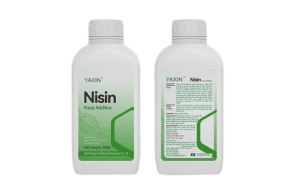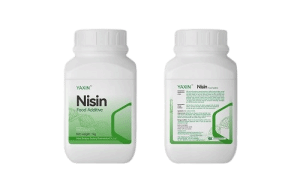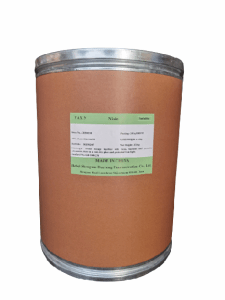
 CONTACT
CONTACT
- Linkman:Linda Yao
- Tel: +8618231198596
- Email:linda.yao@dcpharma.cn
- Linkman:CHARLES.WANG
- Department:Overseas
- Tel: 0086 0311-85537378 0086 0311-85539701
ε-Polylysine Hydrochloride in Food Preservative
TIME:2025-02-12ε-Polylysine hydrochloride is a natural food preservative with notable economic advantages in food preservation. The following analysis covers its cost-effectiveness, shelf-life extension, and product quality maintenance.
I. Cost Considerations
Procurement Cost: Compared to some traditional chemical preservatives such as sodium benzoate and potassium sorbate,ε-polylysine hydrochloride is relatively more expensive. This is primarily due to its complex production process, which typically involves microbial fermentation and other advanced biotechnological techniques. As a result, its manufacturing cost is higher, leading to a higher market price. This increases raw material procurement costs for food enterprises to some extent.
Usage Cost: However, ε-polylysine hydrochloride requires only a small amount for effective preservation, typically at an addition level of 0.05% - 0.2% in food. In comparison, sodium benzoate may require 0.1% - 0.5% in some food applications. While the unit price of ε-polylysine hydrochloride is higher, the lower required dosage balances out part of the procurement cost, making it a cost-effective option in the long run.
II. Shelf-Life Extension
Long-Lasting Preservation: ε-Polylysine hydrochloride has broad-spectrum antimicrobial activity, effectively inhibiting Gram-positive bacteria, Gram-negative bacteria, yeasts, and molds. This significantly extends the shelf life of food products, reducing spoilage due to microbial growth. For instance, in bread production, adding ε-polylysine hydrochloride can extend shelf life from the original 3-5 days to 7-10 days or even longer. For food companies, this reduces losses caused by premature spoilage, increases product availability, and expands market coverage, ultimately lowering overall costs and improving economic efficiency.
Reduction in Wastage: In cold chain logistics and storage, insufficient refrigeration can lead to rapid microbial contamination and spoilage. The effective preservative properties of ε-polylysine hydrochloride minimize this risk, reducing food loss during transportation and storage. Statistics show that in some fruit and vegetable transportations without proper cold chain facilities, the spoilage rate can be reduced from 20%-30% to 10%-15% with the application of ε-polylysine hydrochloride. This results in significant cost savings for businesses.
III. Product Quality Maintenance
Enhancing Quality: ε-Polylysine hydrochloride preserves food quality without negatively affecting taste, color, or texture. On the contrary, since it effectively inhibits microbial growth, it helps retain the original freshness and quality of food. In fruit juice beverages, for example, the addition of ε-polylysine hydrochloride prevents the development of off-flavors, cloudiness, or microbial spoilage, ensuring that the product maintains its optimal quality throughout its shelf life. This enhances the market competitiveness of the product, increases brand value, and generates higher economic returns for food manufacturers.
Meeting Premium Market Demand: With the growing consumer preference for natural and health-conscious food products, the use of ε-polylysine hydrochloride as a natural preservative aligns with current market trends. It enables food companies to develop high-end product lines, justify premium pricing, and increase profit margins. For example, organic and additive-free food products containing ε-polylysine hydrochloride are often priced 20%-50% higher than regular products, yet they remain highly favored by consumers.
Despite its higher initial procurement cost, ε-polylysine hydrochloride proves to be an economically viable food preservative due to its low dosage requirement, effective shelf-life extension, waste reduction, and ability to maintain food quality. Furthermore, its alignment with natural and premium food trends provides an opportunity for higher profitability, making it a strategic choice for food manufacturers.
- Tel:+8618231198596
- Whatsapp:18231198596
- Chat With Skype







